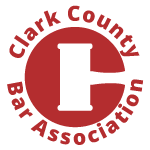By Jerry A. Wiese II, Chief Judge EJDC
Information technology (IT) has been the cornerstone for improvement and efficiencies in the Eighth Judicial District Court for many years. When I became Chief, I could not have imagined all the topics I would learn about with regard to the management of this court, information technology being one of them. These projects are complex, and the process of taking ideas to development then implementation and support is not as easy as it looks. We are fortunate to have such a capable IT leader (Mike Doan), and his stellar team. Our Enterprise Level applications are all designed, developed, and maintained by court employees—not vendors or contractors. These applications require continuous management and development as they grow with the court. I’d like to highlight just three incredible advances in recent years that come to mind.
Order in the court had been contemplated for well over ten years before it came to life. As result of the pandemic, Order in the court became the number one technology priority for then-Chief Judge Linda Bell. This application is astounding in its capability to manage the order activity of the court. I remember all too well the “in and out boxes” of the departments overflowing with paper, criticisms of lost or misplaced orders, and runners moving about the courthouse. Today, the process of submitting orders to the court is simply remarkable, providing departments with flexibility to manage orders through queues, unique authentication of the judicial signature, and immediate filing into the case and service. Since inception, this application has processed over 750,000 orders.
I wanted to highlight Automated Warrants because it doesn’t get the attention it deserves. This application allows our community partners, law enforcement and child protective services to prepare, issue, and execute warrants within minutes. As a result, law enforcement and CPS workers no longer drive to the courthouse searching for judges’ signatures and, most importantly, they can effectuate interventions in more expedient manner to keep our community and most vulnerable children safe. All of the information, security protocols, and standards are imbedded within the application. Having processed hundreds of warrants through this application, I know that the public would be so proud of how well we perform this function, all because of technology created and built by the district court. To date, the district court has processed well over 32,000 warrants for law enforcement and CPS.
Even more obscure but very worthy of recognition is the fascinating internal application creating dashboards for the internal users of the court. Originally used to create real time case management feedback through the development of a series of individual “dashlets,” this application is now experiencing exponential growth in that it has become the go-to for efficiencies for departments, the clerk’s office and court administration. Whenever I hear there is a request for a report, the first question is “is there a dashlet for that?” If the data is in our system, our IT team has created the potential to automate reporting. It’s amazing to watch how powerful this tool is becoming for our court.
Finally, some insight on our move to Zoom for video conferencing. District Court IT tested multiple video conferencing software options, such as Cisco Webex, Microsoft Teams, Google Meet, GoToMeeting, Whereby, Court Call, Polycom RealPresence, Livestorm, Zoho Meeting, and Zoom. Zoom is the only provider that allows for H.323 room connectors (point-to-point video conferencing), as well as browser-based video connections. The H.323 room connector is necessary for communications with other justice partners, such as correctional facilities. The browser-based connection is vital for access to justice, especially in family court where there are a high percentage of pro se litigants. I’ve been happy with the results and certainly appreciate the increased access to justice capabilities as a result of video appearances.
I am so proud of this district’s focus on constant improvement for the public, our partners, and our staff. Each day we look to improve how we administer the court and I look forward to many more information technology improvements and advancements in the future.

About the author
Chief Judge Jerry Wiese serves in Department 30 of the Eighth Judicial District Court bench. Since taking the bench in January of 2011, Judge Wiese has presided over numerous trials, both civil and criminal, and has presided over many settlement conferences. He coordinates the Judicial Settlement Conference Program and presides over the Medical Malpractice Sweeps. He was elected Chief Judge by his peers and has served as the Chief Judge of the District Court since July 2022.
About the article
© 2024 Clark County Bar Association (CCBA). All rights reserved. No reproduction of any portion of this issue is allowed without written permission from the publisher. Editorial policy available upon request.
This article was originally published in the Communiqué (Apr. 2024), the official publication of the Clark County Bar Association. See https://clarkcountybar.org/about/member-benefits/communique-2024/communique-apr-2024/.
The articles and advertisements appearing in Communiqué magazine do not necessarily reflect the opinion of the CCBA, the CCBA Publications Committee, the editorial board, or the other authors. All legal and other issues discussed are not for the purpose of answering specific legal questions. Attorneys and others are strongly advised to independently research all issues.


